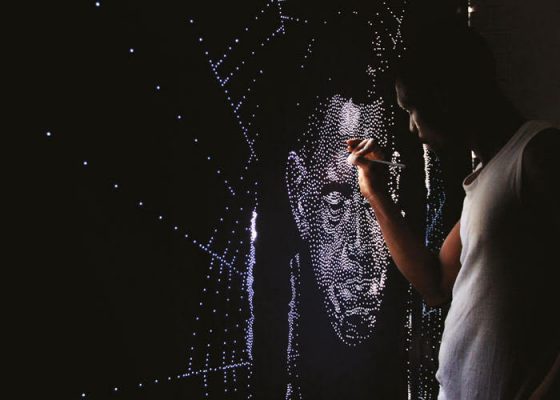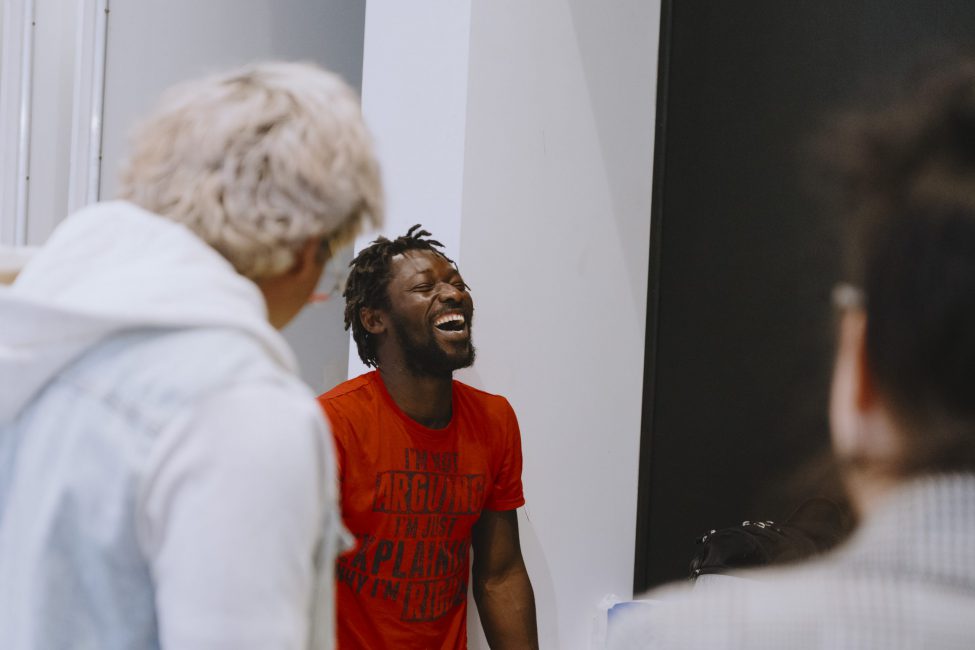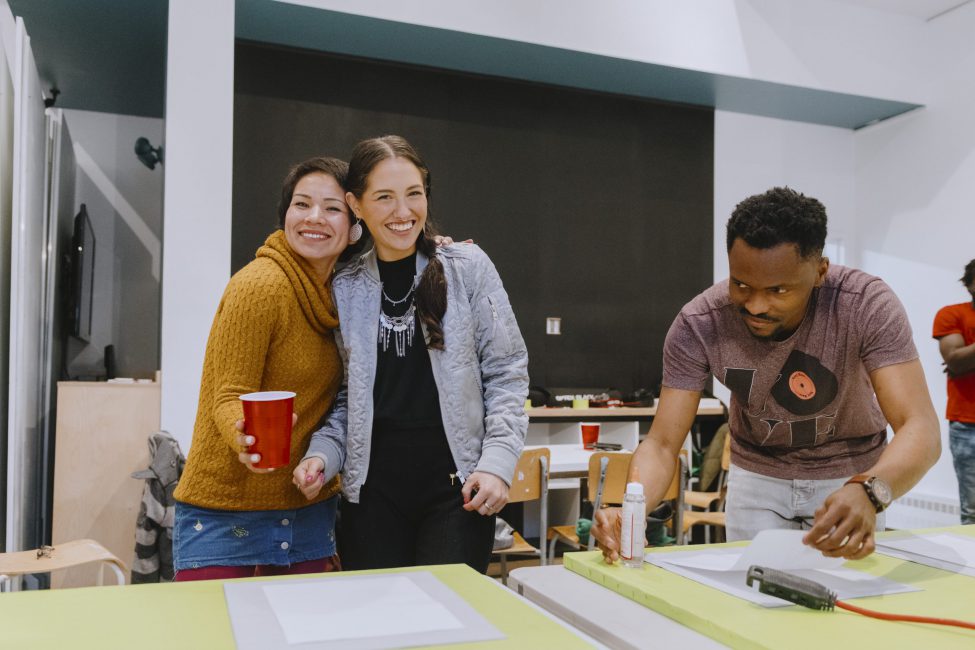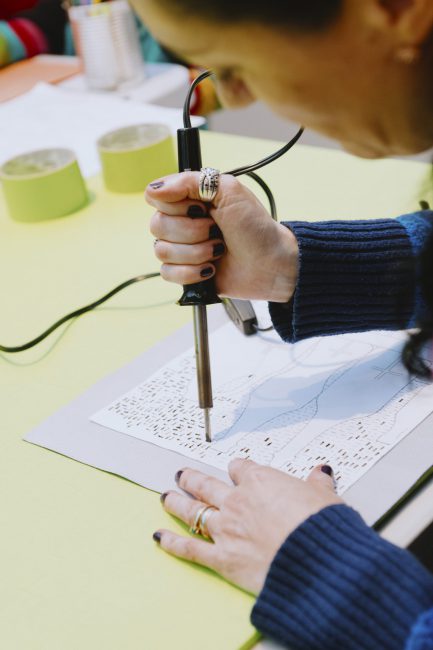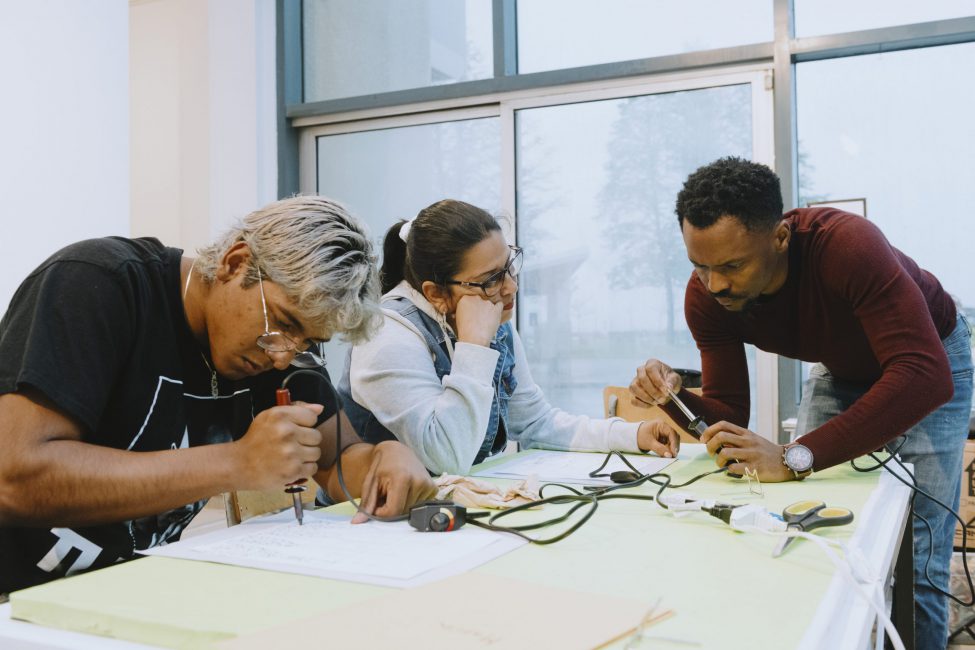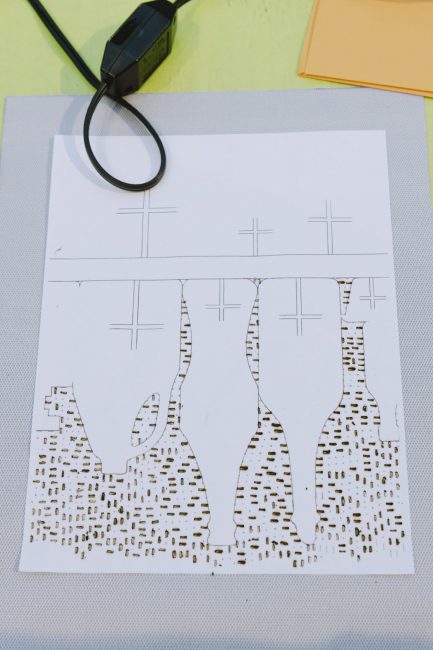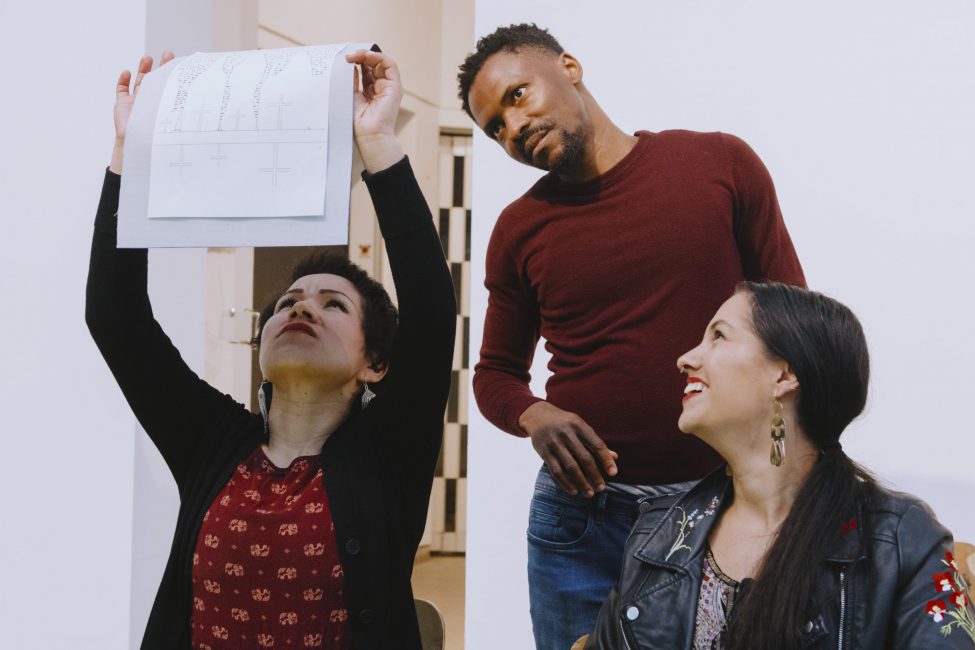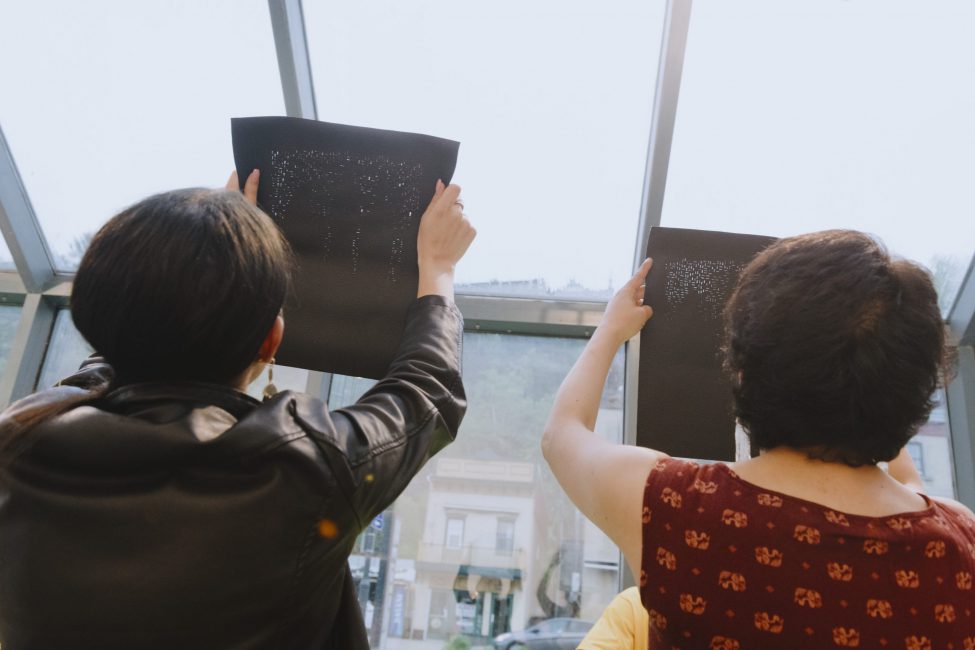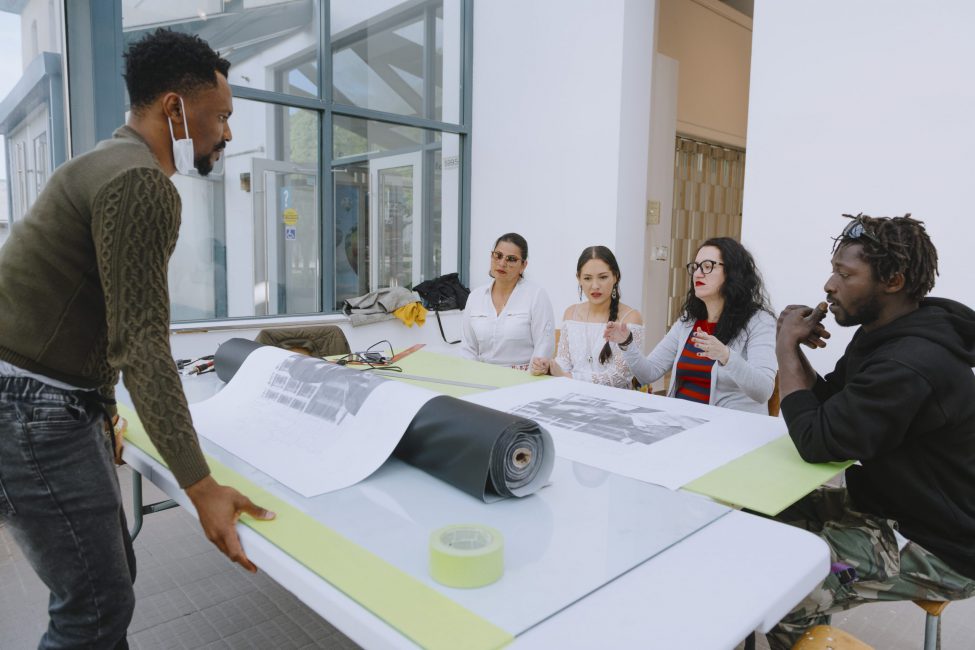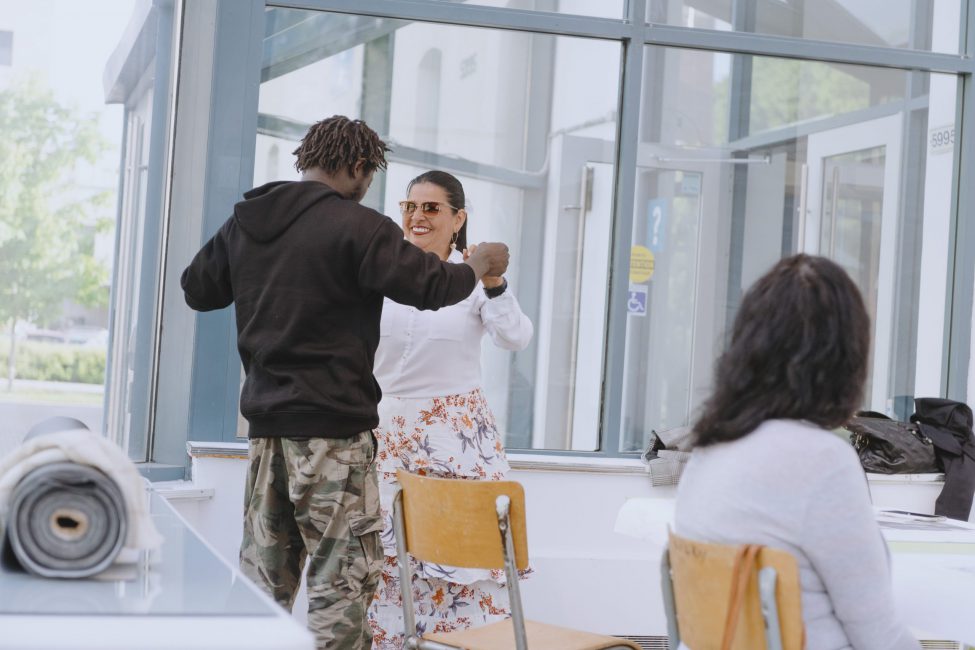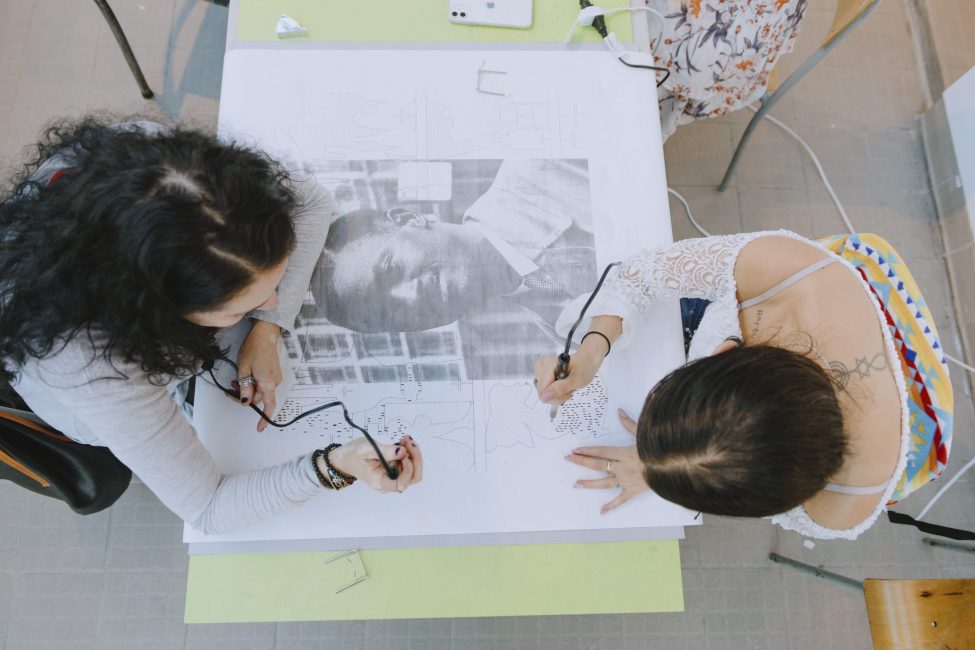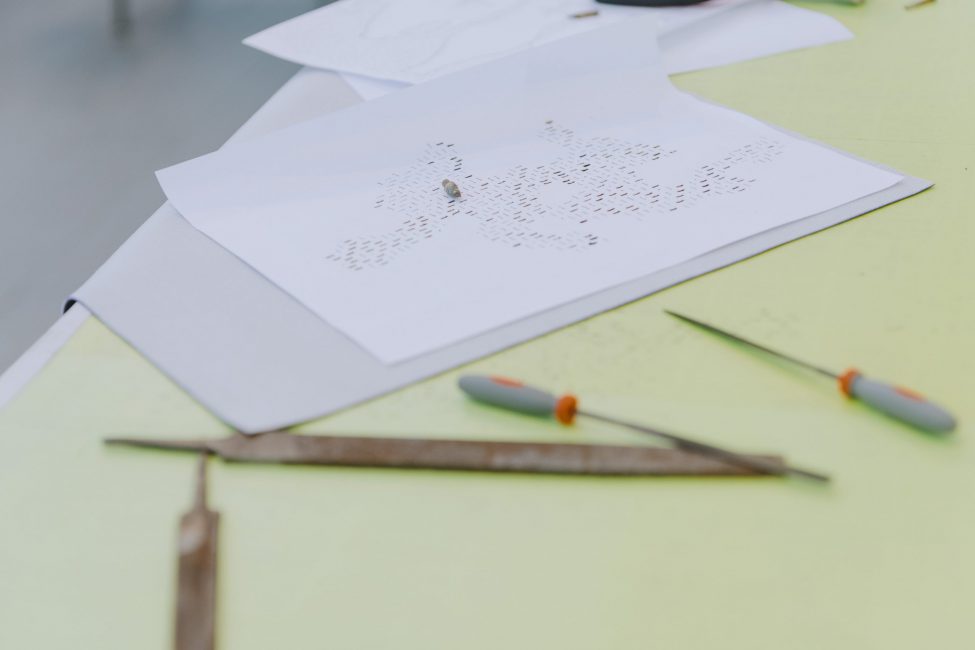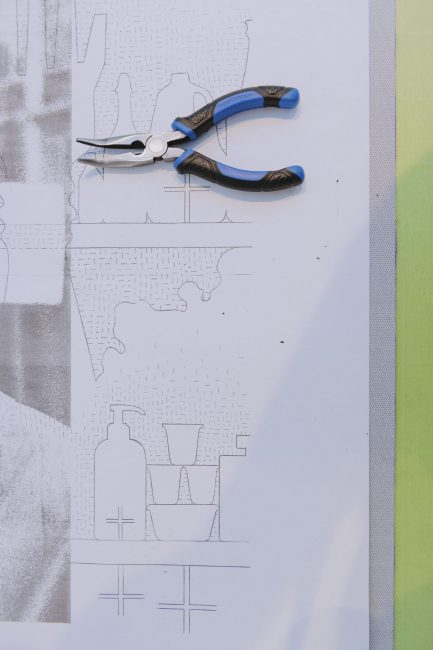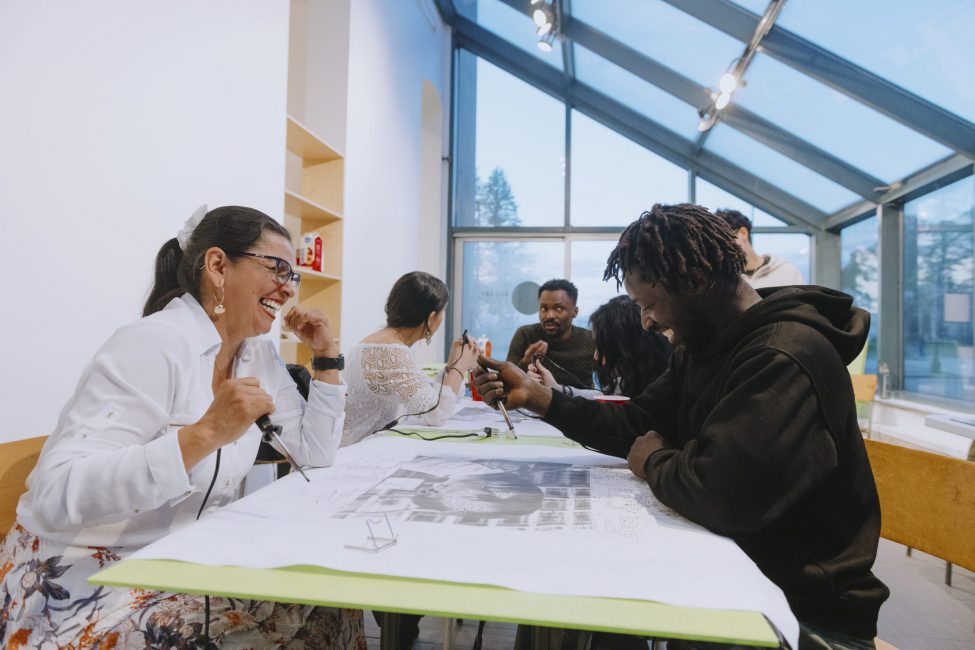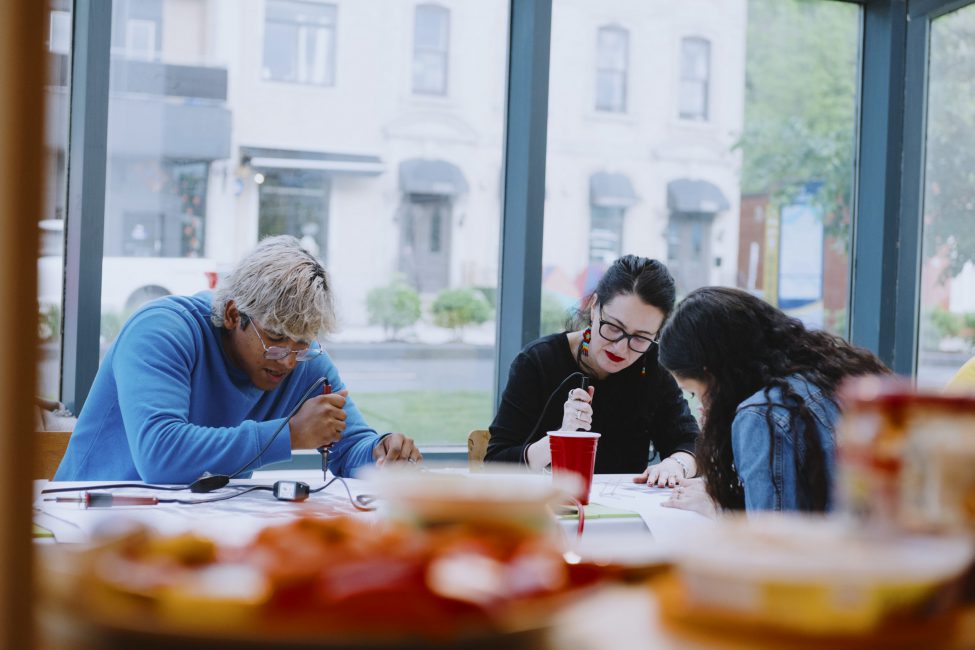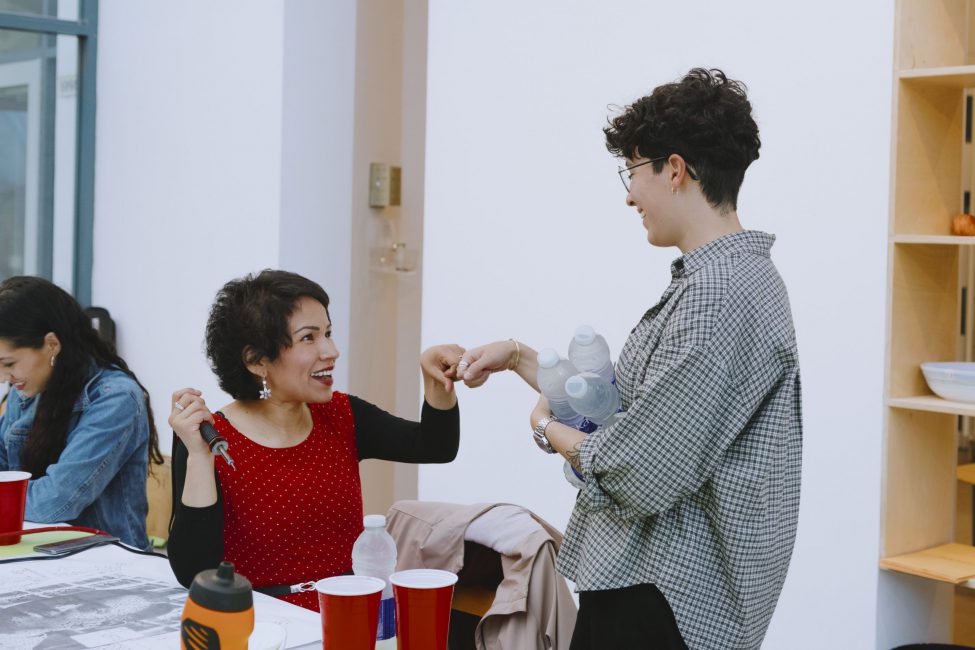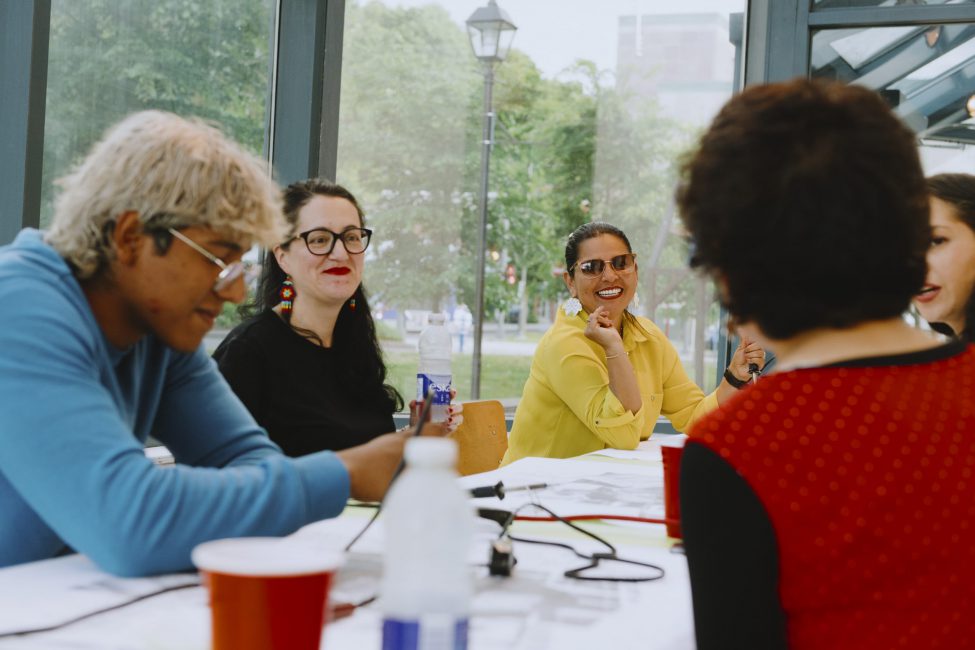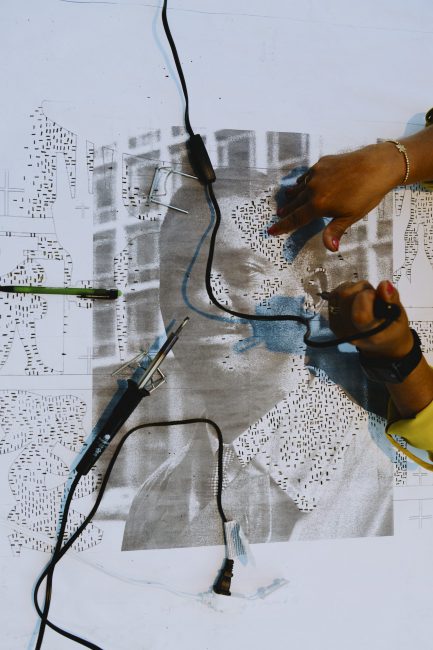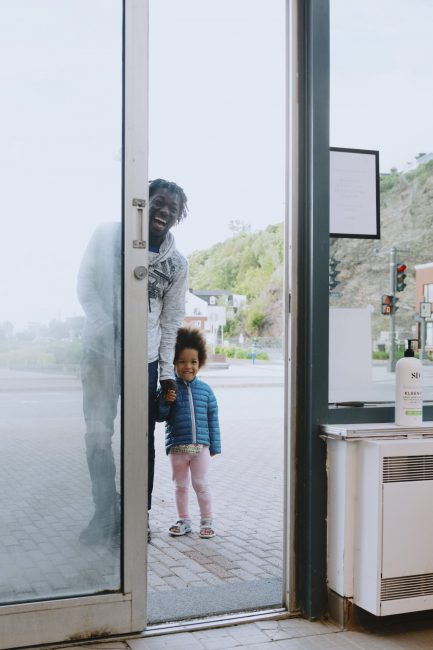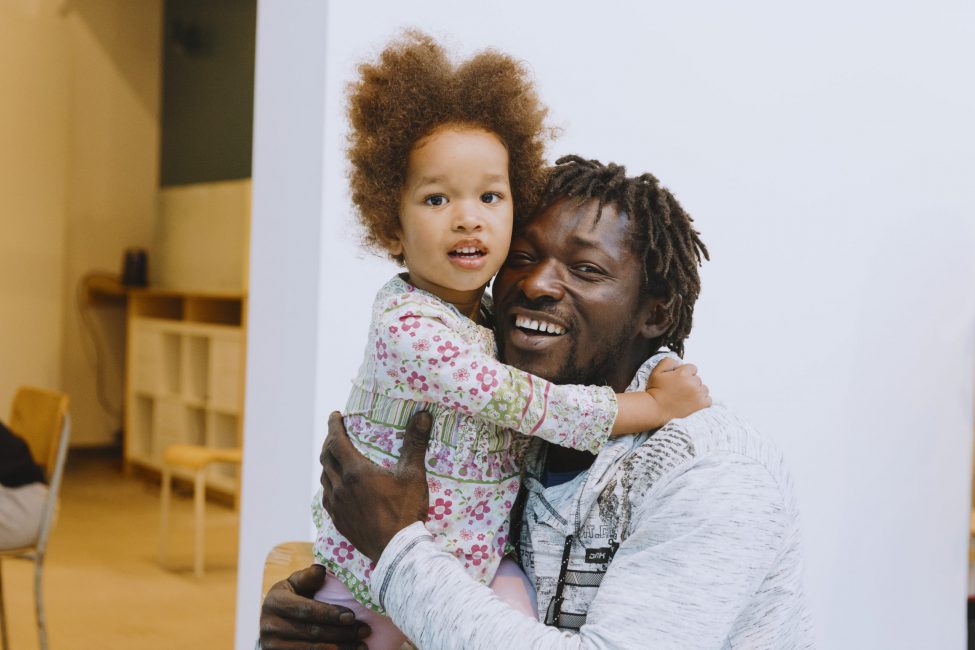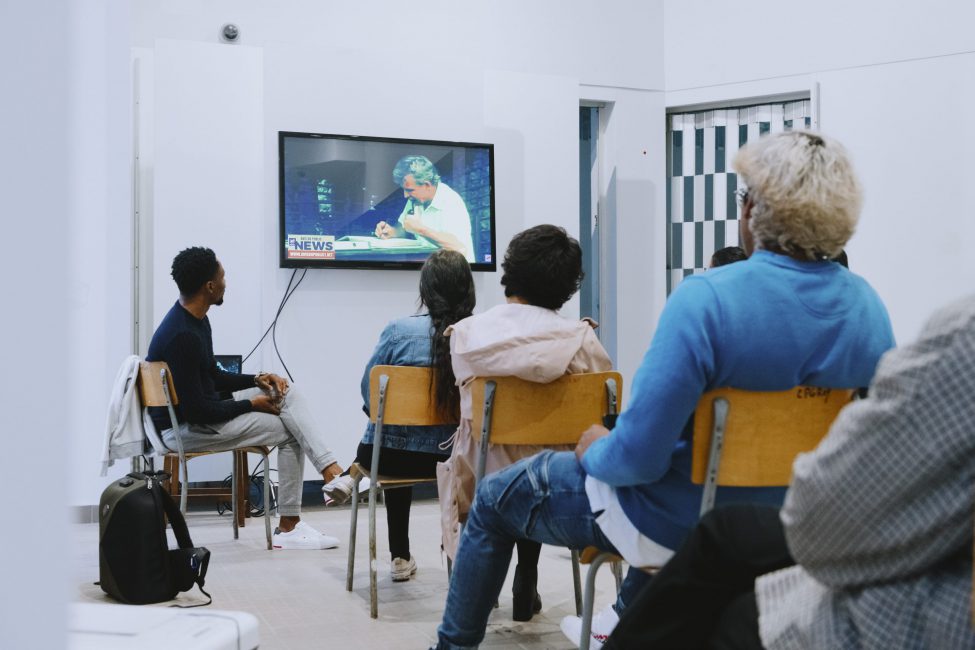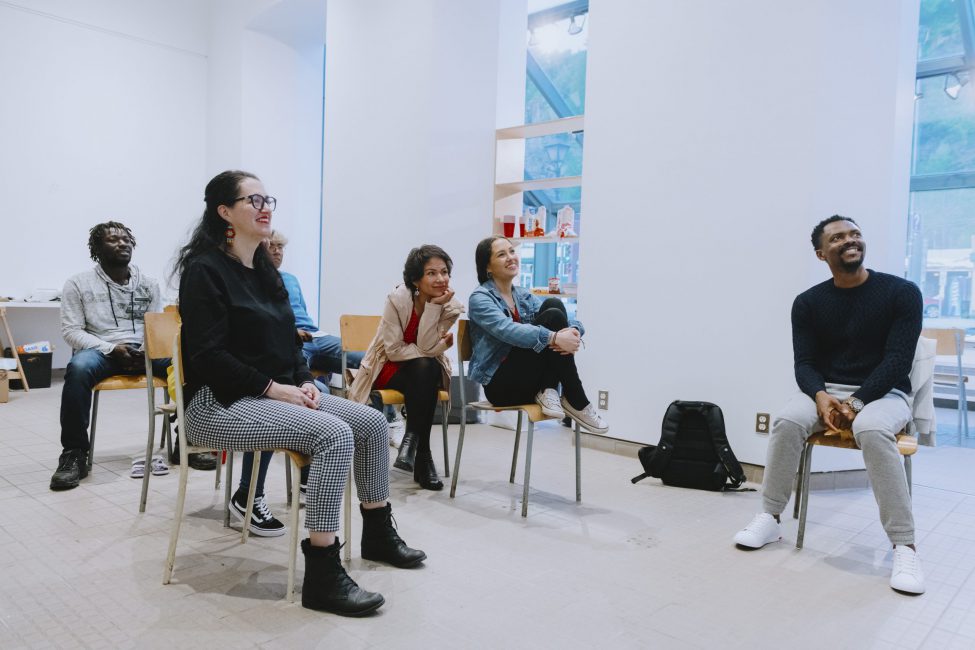Dans la peau d’Isidore Bakanja
Médiation, Exposition - L’Autre Gare
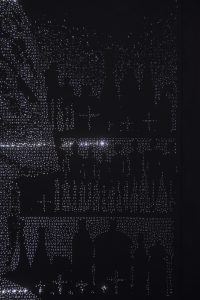
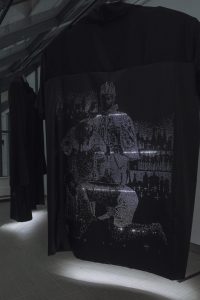

Pour ce projet, Nkembo Moswala a invité des participant·es lévisien·nes d’origines variées à témoigner de leur expérience d’immigration et de leur vécu en tant que nouveaux·elles arrivant·es. Leurs histoires s’ajoutent à celles évoquées plus haut pour être assemblées en une narration émanant d’un processus d’échanges, de réflexions et de partage. Ces mêmes personnes ont aussi participé avec l’artiste au travail de scarification formant les motifs d’immenses vêtements, pièces formant le cœur du projet. Ceux-ci composent la garde-robe monstrueuse qui sera exposée à l’Autre Gare de Regart, au 5995 rue Saint-Laurent à Lévis, du 2 au 18 décembre 2022 et restera en vitrine jusqu’au 8 janvier 2023.
L’équipe de Regart et l’artiste Nkembo Moswala s’unissent pour remercier leur précieux partenaire Le Tremplin, Centre pour personnes immigrantes et leurs familles. Nous saluons aussi la contribution remarquable des participant·es aux ateliers de création, qui ont offert leur temps, leur travail et le récit de leur expérience migratoire pour créer ce projet aux multiples facettes. Merci infiniment Amalia, Mohamed, Esperanza et Valentina, Juan Camilo et Maria !
IN THE SKIN OF ISIDORE BAKANJA
Izidore Bakanja, born in 1885, the very year when the contours of the African continent as we know it today were drawn, was a lay catechist. Bakanja’s experience provides us with an insight into one of the most abject colonial regimes of the time, in what was then the Independent State of Congo (EIC) – now the Democratic Republic of Congo – under the control of the sovereign King Leopold II. More than a martyr of the colonial era, his experience here echoes more broadly the realities experienced by migrants in their workplaces. The personal experience of artist Nkembo Moswala, combined with that of other foreign workers in Levis, is the starting point for this exhibition.
Forced to settle in Canada following the announcement of the Covid-19 pandemic, and to retain a legal residing status in the country, Nkembo has no other choice but finding a job, which he does in a furniture manufacturing factory. Soon, after exhausting and injuring himself at work, and rightly taking his medical rest (against the advice of his employer), he was shown the exit door. Faced with this precarious situation, he felt like Isidore Bakanja. This young Congolese converted to Catholicism, and relaying the missionary voice, succumbed to the lashes of the whip armed with nails that he was inflicted with because of his beliefs. In the service of an administrator of the Société Anonyme Belge (a rubber company), his fate was that of many of his peers.
Crossing these two stories, one historical, the other personal, the artist asks about the fate of migrants:
« Can the human dignity of a category of people still be questioned today? If so, are they the ones who inflict or suffer, the perpetrators or the victims?”
The forced labour of indigenous peoples in colonial times has been replaced by immigration in search of better living conditions, which has the effect of fueling the economies of the so-called host countries. In the Skin of Isidore Bakanja thus raises global issues related to exploitation, labour and the difficulties of the migration experience.
Through the artist’s own ancestral technique of incising and marking, called Nzoloko, which means scarification in Lingala, Nkembo denotes the wounds we endure as global citizens. The act of incising, perforating, and marking in order to find the light represents the pursuit of happiness, the Eldorado of all people, a quest fraught with difficulties and suffering.
For this project, Nkembo Moswala invited participants from Levis from various backgrounds to talk about their experiences as immigrants and newcomers. Their stories are added tothose mentioned above to form a narrative emanating from a process of exchange, reflection and sharing. These same people also participated with the artist in the work of scarification forming the patterns of huge garments, pieces that are at the heart of the project. These pieces make up the monstrous wardrobe that will be exhibited at the Autre Gare de Regart, at 5995 Saint-Laurent Street in Lévis, from December 2, 2022 to January 8, 2023.
Crédit photos: Jean-François Gravel
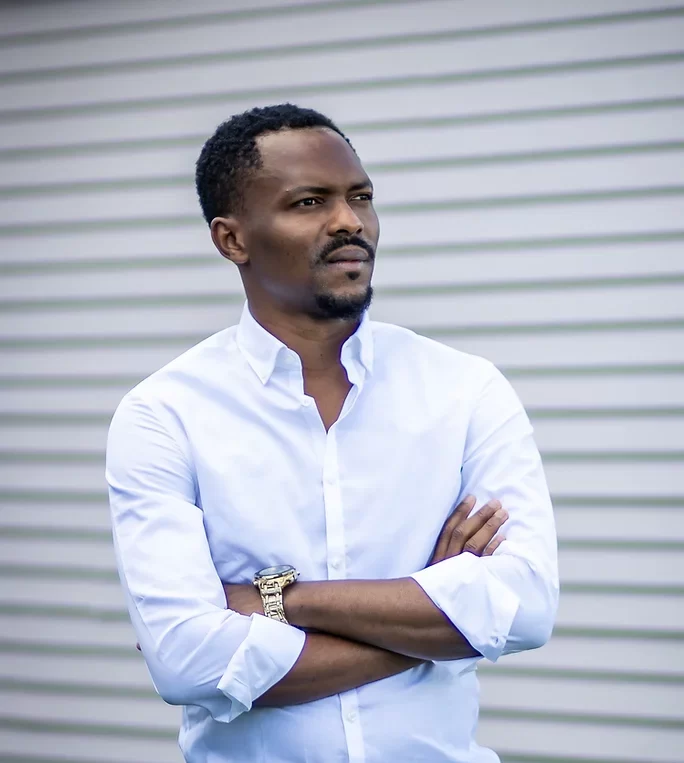
Nkembo Moswala
Artiste
Nkembo Moswala est un artiste professionnel émergeant en art actuel établi à Lévis. Originaire de la République Démocratique du Congo, il est titulaire d’un baccalauréat en arts visuels de l’Académie des Beaux-Arts de Kinshasa. Sa pratique artistique se penche sur les idées de renaissance et de renouveau. Dans ses œuvres récentes, il souligne les dommages causés par la globalisation dans la société contemporaine.
Pour en savoir plus sur l’artiste : https://www.nkembomoswala.com/
Nkembo Moswala is an emerging professional artist based in Lévis. Born and raised in the Democratic Republic of Congo, he holds a bachelor’s degree in visual arts from the Académie des Beaux-Arts in Kinshasa. His artistic practice focuses on the ideas of rebirth and renewal. In his recent works, he highlights the damages caused by processes and effects of globalisation in contemporary society.
